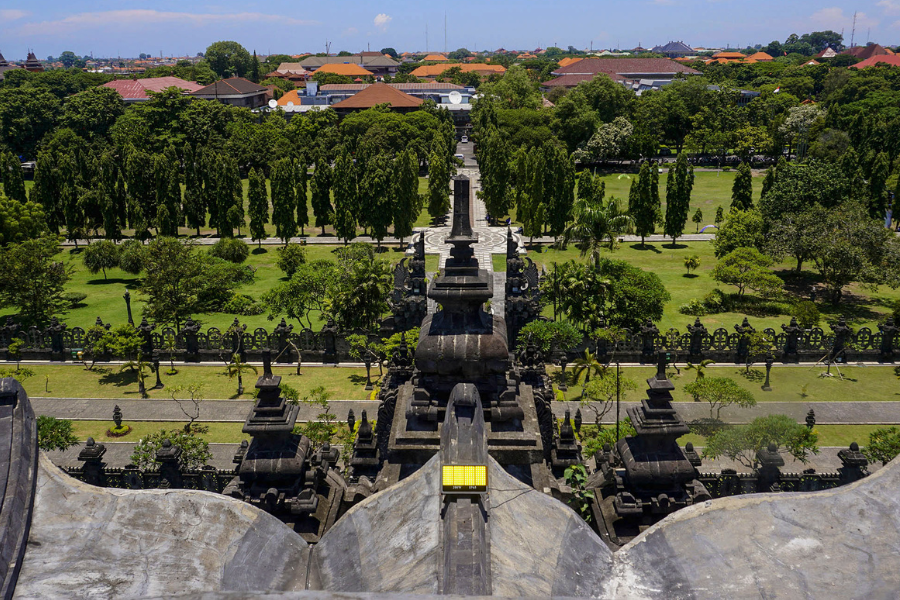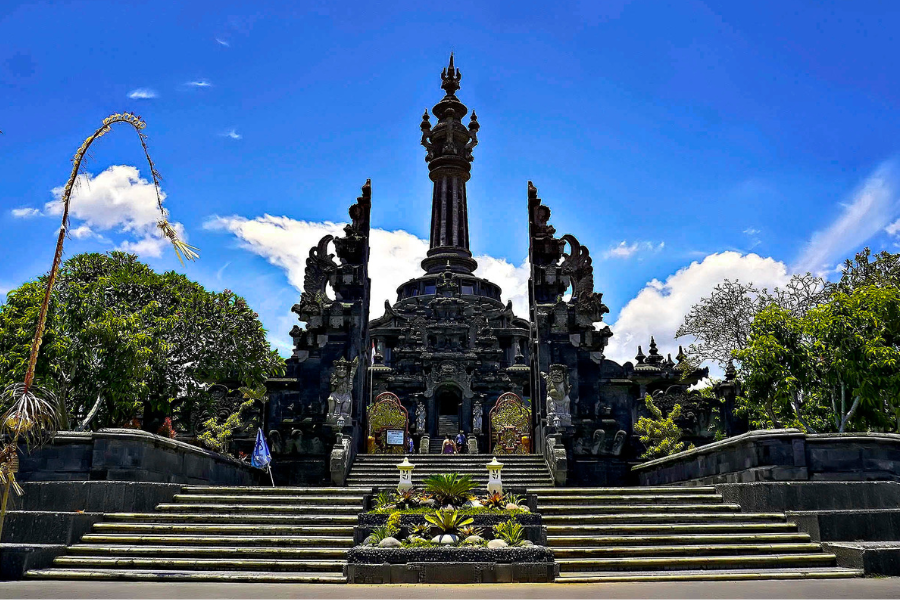The Bajra Sandhi Monument stands as a miniature yet powerful representation of Balinese historical resilience. A testament to the indomitable spirit of the Balinese people, it commemorates their fight for independence during the Puputan War in 1906. Nestled in the heart of Denpasar, flanked by the Niti Mandala Renon and in close proximity to the governor’s residence, this iconic monument is easily accessible, inviting visitors into a journey through time.
Inspired by the Adiparwa story of Lingga and Yoni, where Lingga represents the main part and Yoni serves as the base, the monument’s name, Bajra, translates to a big bell. At its pinnacle, a grand bell symbolizes the union of Lingga and Yoni, embodying the harmonious balance of masculine and feminine forces in Hindu philosophy. This significant bell also serves as a worship tool.
Conceived in 1981 by Balinese architect Ida Gede Yadnya and erected in 1987, the monument was officially established in 2003 by former President Megawati Soekarnoputri. Climbing the 17 stairs to enter the 45m high structure, the numerical combination mirrors Indonesia’s independence day: 17 of August 1945.
Bajra Sandhi

Bajra Sandhi comprises three distinct parts. The first floor, Nistaning Utama Mandala, houses information about the monument, a library, exhibition area, restroom, and a souvenir store. Ascending to the second floor, Madianing Utama Mandala, visitors encounter a fish pond named Puser Tasik, symbolizing the milky sealine around Giri Mandara, a sacred mountain housing Tirta Amerta, the holy water of life. Bale Bengong in the corners provides a serene resting spot for visitors.
The second floor unveils 33 dioramas narrating the Balinese struggle against the Dutch. Beginning with Balinese life in 3000 BC, the dioramas trace the evolution of Balinese society, including the development of Subak irrigation in the 11th century and significant wars against colonial powers in the 19th and 20th centuries.
A spiral staircase, Tapak Dara, leads to the third floor, Utamaning Utama Mandala, also known as the viewing room. This sacred space offers panoramic views of the surroundings.
Recently, the government has invested 7.6 billion rupiahs for the monument’s renovation, emphasizing its historical and cultural significance. The expansive 13.8-hectare area is earmarked for further development, including spaces for art performances.
The Bajra Sandhi Monument is a treasure trove of Balinese history and a testament to the enduring spirit of its people. Open daily from 08:30 to 17:00 WITA, with extended hours on weekends, it offers an enriching experience at an affordable cost. The monument stands not only as a historical landmark but also as a symbol of pride for the Balinese people. So, come and immerse yourself in the tales of valor and resilience that echo through the corridors of this monumental edifice.








